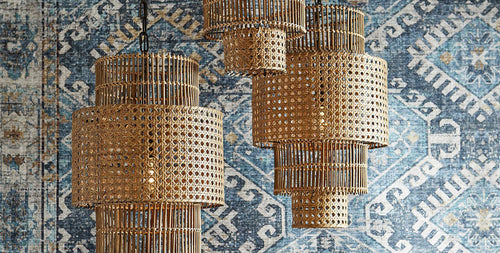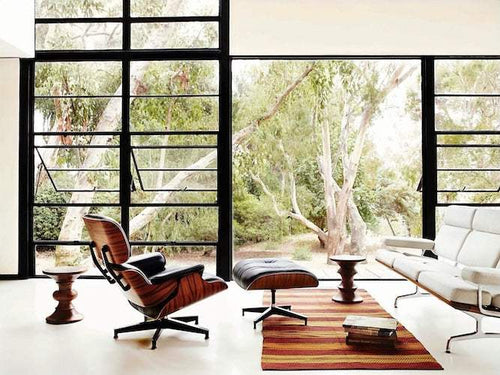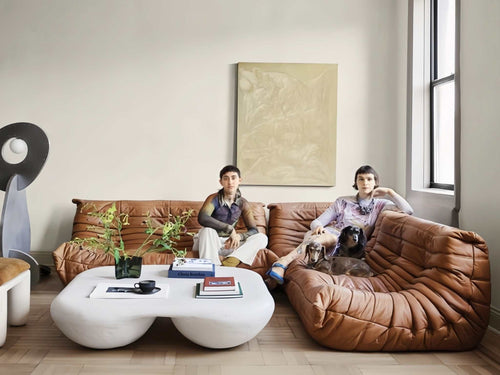A floor lamp can transform dark corners into cozy nooks that invite relaxation and conversation. It can also elevate your decor style, whether you prefer sleek and modern or more vintage-inspired designs.
However, it's important to know how tall a floor lamp should be before making a purchase. Otherwise, it may look out of proportion or glare into guests' eyes.
Are floor lamps in style?
Floor lamps are a stylish and practical way to light your living room, especially if you have dark corners in the space. You can also use them to add ambiance after the sun goes down, creating a biophilic atmosphere in your home that mimics the soothing qualities of natural light.
As with other types of lighting fixtures, you can find floor lamps in an array of shapes, sizes, and styles to suit any decorating scheme. Some are more modern and sleek in appearance, while others have a classic traditional feel with a drum or bell-shaped shade. You can even get lamps with shelves attached to the base for additional storage and a chic design element.
You can also use floor lamps to highlight architectural features, artwork, or gallery walls. Ideally, you want to position your lamp so it can illuminate these focal points in your living room. A curved floor lamp is a great option because it will illuminate these areas without impeding the flow of foot traffic around your furniture.
It's also important to keep in mind that the floor lamp you choose should be proportional to the size of your living room. An overly large or small lamp will create visual clutter and disrupt the overall balance of the space.
When choosing a floor lamp, consider the material and color to help it align with the elements in your living room. The metal element symbolizes clarity, precision, and efficiency. You can incorporate this element through a lamp with a metal base and a white, gray, or metallic shade. The wood element represents growth, expansion, and vitality. This can be represented through a wooden or bamboo-based lamp with a green or blue shade. The wood element is linked to the northeast and southwest directions, so you can reinforce this energy by positioning your floor lamp in those areas.
How tall should a floor lamp be?
When deciding on the height of your floor lamp, take into account the scale of the other pieces in your living room. You don’t want a lamp that is so tall that it dwarfs the furniture around it or so short that it looks out of place and too close to the ground. Generally speaking, your floor lamp should be about the same height as the bottom of your chair or sofa cushion. This gives you the right level of light for reading and other tasks without creating glare.
The most common type of floor lamp is an ambient or standard lamp topped with a traditional shade that diffuses the light for semi-direct illumination. This type of floor lamp is a great choice for a corner of your living room or next to a comfortable lounge chair. It’s also a good option for a reading nook, as it can be directed at the book or magazine you’re working on to avoid eye strain.
A curved or arched floor lamp can add a striking touch to your home decor. It can stand alone or be paired with a side table on either side of a sofa or in a corner of the room. Arched lamps can also be used to illuminate artwork or a gallery wall. A large curved lamp with a metallic shade works well with a traditional decor scheme and can help draw attention to the artwork.
A floor lamp can serve as an additional layer of lighting in your living room, complementing the overhead central lights and other wall sconces. It can be especially useful for evening reading, socializing, and relaxing. When using a floor lamp as a reading light, it’s important to remember that the bulb is angled down and will cast a narrower area of lighting than a regular standing lamp with a more expansive shade.
How to pick a floor lamp?
When deciding on the perfect lamp, consider its intended purpose and style. If it will be used for reading, for example, then the bottom of the shade should be around eye level when sitting. This will eliminate pesky shadows and glare, making for a comfortable spot to relax and read. You also want to choose a shade that suits your style and décor. A translucent shade works well with softer ambient lighting, while opaque shades are great for accent lighting and drawing attention to a focal point.
If you plan on using a floor lamp for general illumination, then opt for one with a larger base and shade to provide more light coverage. If you have a smaller space, then go with a slimmer base and shade that’s more compact and subtle. Then, pick a fixture with a dimmer switch to control the amount of light you’re getting.
A popular placement for a floor lamp is next to the sofa or reading chair. This setup is a common and convenient way to light up a living room, and it’s sure to look stylish regardless of the furniture arrangement. However, you should avoid placing a standing lamp in front of a window, as this will block natural light from entering the room at night and can make it feel darker overall.
Another option is to place a floor lamp in a corner of the room to add both style and function to an otherwise bare area. If you’re going for a classic, traditional look, opt for a lampshade made from fabric or wicker, like the ones pictured here. Or, if you prefer modern minimalism, try a metal base with a sleek shade.
You can also use a floor lamp to brighten up a dark hallway or entryway. Just be sure to choose a fixture with an on/off switch and a light bulb that’s safe for the area, such as a halogen bulb, which provides more natural-looking task lighting and helps colors appear sharper.



















































